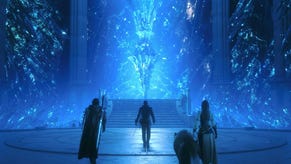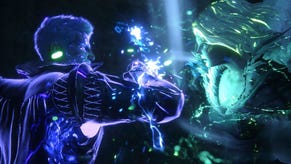Absolutely everybody should play the Final Fantasy 16 demo – out on PS5 today
At a recent hands-on, I got to play the better part of six hours of Final Fantasy 16. But all you’ll need to make your mind up is the upcoming demo.
At a recent hands-on for Final Fantasy 16, we got to play a good six hours of content from across the game. Though all from a work-in-progress build that Square Enix was careful to note had been specifically designed for the media tour, much of what we played appeared to be pretty much the final version of the game.
You do this job for long enough and you get pretty good at identifying when something has been stitched together for a hands-on versus when it’s done – and this game appeared to be well and truly finished at this event, almost a full two months from release. There’s an air of confidence around how finished it is, in fact – I’ve been told that there’s no day-one patch to tighten things up, because it’s just not needed. The game is finished, polished, ready. It’s a stark contrast to Final Fantasy 15, which had a messy final preview that was followed by a last-minute polishing delay before the preview embargo even lifted.
That’s the first major point I’d make about Final Fantasy 16, in fact. It’s clear that this is the most confident and complete main-line Final Fantasy game at launch since the PS2 era; it’ll match up to the excellent launch state of Final Fantasy 7 Remake. From a fit-and-finish perspective, I’d confidently say that quality is no longer a question. The conversation shifts, then, to the game as a work of art and design – and if people are going to be picking up what it’s putting down.
That’s what leads to this headline, really. To paint a full picture, I got to play the first four hours of Final Fantasy 16, followed by a couple more hours’ of content from later in the game. Of the initial four hours, the first almost two hours comprises the game’s prologue – and this is the content the public will be able to experience in its upcoming demo.
The term ‘vertical slice’ is generally bloody stupid exec-level speak that isn’t often very compatible with the manner in which games are made – but this segment of FF16 is one of the best examples of that term in action I’ve ever seen. In the prologue you play as a younger version of Clive, FF16’s protagonist, experiencing a small characterful slice of day-to-day life before events unfold that set him on the path to his adult life – which is where the game really gets going. However, based on what I played of the rest of the game, pretty much everything you need to see is in the prologue.
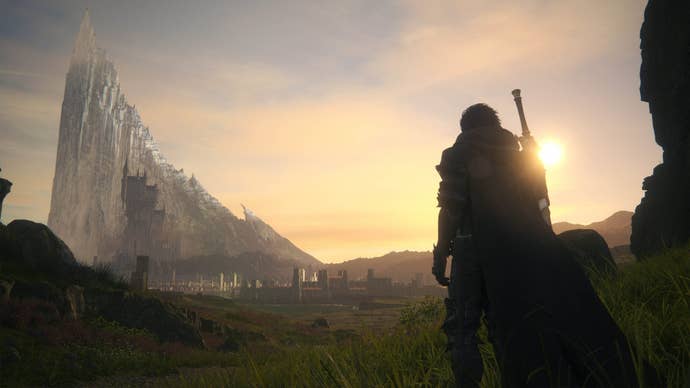
There are both gentle character-developing story scenes and bombastic action. FF16’s brutality, which is certainly new for this entry, is on proud display. Soldiers and docile handmaidens alike get their throats slit in full view of the camera. Clive heads on a preppy non-essential mission with two temporary party member NPCs (sadly not called Biggs & Wedge), that mission acting as a tutorial for combat and culminating in a battle against an iconic FF enemy. During this time, you’ll level up and get used to the combat, and by the time you return from this mission you’ll be ready for the real thing – which is for the best, as it all then kicks off for real. It all builds to, of course, a bombastic Eikon battle.
It is, broadly speaking, all there. It feels like those two hours are the entire game compressed and shoved into a blender. There’s elements that aren’t here, of course – more complicated combat powers, upgrading Clive and his gear in full, more open-ended areas, and full context on the narrative’s events – but anyone with a half-decent video game knowledge can extrapolate what these will be like based on those first few hours and the knowledge that God of War 2018 was a major structural touchstone for FF16’s development.
This is the exact thing Final Fantasy 16 needs, too. This is a game with a wildly different proposal of what a Final Fantasy game can be – and it’s also undoubtedly aiming at a broader audience, many of whom don’t know the franchise intimately. That makes this demo vital, really: it’ll allow newcomers to see how different this FF is to their preconceived notions from casual observance of a 30-year history, and it’ll also allow existing fans to figure out if this entry is still for them or not.
Basically, everybody should play FF16’s demo. You will come out of it with a very strong idea of if this game is for you or not.
Beyond the Demo
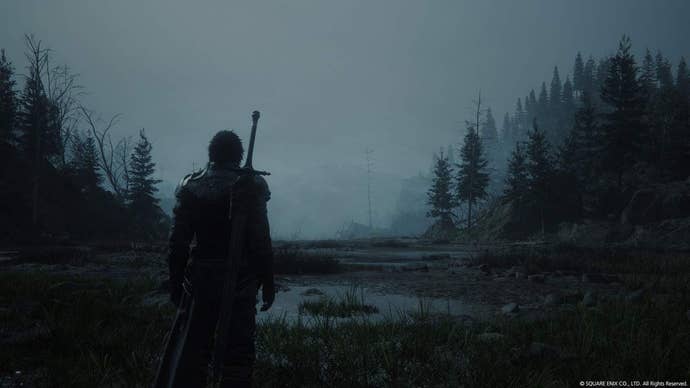
This is a preview, of course. And so you probably want to know what I think. And, well… gosh, it’s complicated? I think Final Fantasy 16 is excellent, though as a series fan for years, I’m still not 100% convinced this is what I wanted from the game – though I greatly enjoyed my time with it regardless.
The combat, which is more Devil May Cry than anything else, has that character action edge. In a boss battle, with the music pumping, you’ll find yourself shuffling to the edge of your seat. I could sense my shoulders rocking back and forth in time with the rhythm of the music and the combat. More difficult encounters, like bosses, saw me slowly slipping into something of a trance. That’s always a sure-fire sign of some good-ass battles.
One thing pulled from other FF games is the concept of ‘stagger’, where you build up pressure on an enemy to put them into a semi-stunned state where they’re more vulnerable to big attacks. That becomes the rhythm, even for small enemies – pressure, pressure, stagger, unleash. Even with grunts, that moment of release as you blast them full-power is incredibly satisfying.

There have been a lot of arguments about how much of an RPG FF16 really is – and we’ve even had the developers wryly poking fun at the discourse in a PAX panel. It is worthy of discussion, though. And the truth is, this is probably the least classically RPG a numbered Final Fantasy has ever been. Depending on where you stand, that can be for good or ill in equal measure. One of the things I cherish most about Final Fantasy is its chameleonic ability to change to match the times. And so I welcome the new direction.
If you’re trying to put a finger on exactly what it’s like, the action-versus-RPG tug of war can be summed up in little things, really. Like how, despite being a game focused on grand elemental creatures, there’s no elemental aspect to combat. Using fire moves on the ice-clad Shiva means nothing. Or in healing – you can’t garner a huge stack of Potions to brute force through combat in that classic RPG way because there’s a healing limit, so you can carry about five potions total.
And though the likes of Jill and Cid will join you in battle as party members, they largely seem to be there for aesthetic reasons. The party banter as you walk around is lovely, but in battle they may as well not be there, awkwardly shuffling back and forth before tossing out an attack that lands with the ferocity of a butterfly. There’s certainly none of the grand team-up attacks of FF15 or the puzzle-box style multi-character design of FF7R. It feels like they’re present in battle more out of obligation to FF’s reputation as having a ‘party’ of fighters than anything else. There is at least one more fruitful ally, however: Torgal, the dog who is a constant companion that can extend combos and heal on command.
These design things more closely resemble character action games - but that’s really what FF16 is, at least in its combat.
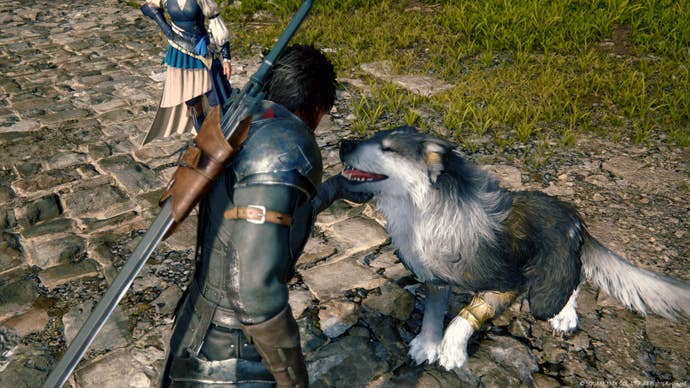
FF16 Producer Naoki Yoshida is right when he kicks back and says this is still an RPG, though. That genre comes in all shapes and sizes, and FF16 has plenty for fans of it. Clive levels up and grows. There’s a range of gear slots, upgrades, and skills to be unlocked. And in Devil May Cry, you’re not going to find a side quest by going off the beaten path in a zone – so it does differentiate. It’s important to understand that it’s all lighter-touch, though. And that is by design.
In terms of the open-ended elements, we should quickly talk about the game’s structure and zone design. As far as I can tell, FF16 appears to have the same sort of ‘hub and spoke’ design as found in games like God of War. Once the story settles into its rhythm, your ‘home base’ will be Cid’s Hideaway, a sort-of classic headquarters with all the mod-cons of Mass Effect’s Normandy. There are shops, NPCs to upgrade things, you’ll pick up and turn in a lot of side quests here, and you’ll return here regularly to take stock before heading out on story missions.
The zones you head out to from the hideaway will either be more dungeon-like – with a clear linear path that ushers you from one story beat and battle to the next – or open-ended. The open areas are perhaps best thought of as ‘open zone’ rather than ‘open world’: they’re large areas that have a linear objective goal within them, but can be more fully explored. Within Final Fantasy, a decent comparison is probably The Calm Lands in FF10 or Gran Pulse in FF13, though the one zone I saw was probably larger than the former but smaller than the latter.

What remains unclear is the ratio of these areas. In the later stages of the hands-on, I explore one, Three Reeds, with roaming enemies to fight and a few side quests to pick up. Mostly, though, the areas I played were of the more linear variety: grand castles that look beautiful as you pass through them, but design-wise walled gardens that you can’t explore very much of. I’m hoping for some more widely-explorable towns and castles in the final game.
The vibe I get from the preview is that FF16 will be a game that is more than the sum of its parts. I walked away from the hands-on experience very pleased and excited for the final game, but it’s also fair to say that I didn’t have a ‘wow factor’ moment, something that really made the game stand out. There’s nothing so brave as FF7’s visual spectacle or FF12’s Gambit System, for instance.
I think in the mind of the developers this is what the Eikon fights are for, with their huge, PS5-justifying spectacle. But honestly… I just found the two I played a bit rote. It just wasn’t interactive enough for me. Far more interesting was a fight against a character who was half-transformed into their Eikonic form – leading to a tense and thrilling one-on-one fight in the regular combat system.
There’s nothing wrong with a game not having something that knocks you on your arse with how shockingly brilliant it is, though. FF16 seems like the sort of game where a bunch of good ideas come together to make something great, even if it’s less likely to provoke a tidal wave of social media posts about how brilliant it is. Sometimes the alchemic balance of a bunch of good stuff we’ve already seen elsewhere working in perfect harmony can deliver a better experience than a game that has something truly earth-shattering in it. In fact, several of the best Final Fantasy games - like 9 - have been games exactly like this.

If there is an X-Factor, though, it’ll probably be the story. I can already tell that in terms of voiceover and performance, this is undoubtedly going to be a series high. All of the English-language cast – who recorded first, before their Japanese counterparts – are brilliant, evocative, and likable. And British! Which is always a bonus. And while I am getting vibes that I’ll be able to predict where it’s going, I reckon the narrative is taking some brave swings, at least in the context of what Final Fantasy stories typically are. FF16 will hit different.
That fact leads us to the one question this preview can’t answer, in fact. Reviews from games critics who know FF well won’t answer it, either. That question being: can FF16 find a new audience?
Before FF16 was even publicly announced, I was told that Square Enix knew that the direction they were taking the title in would alienate a not-insignificant portion of the existing FF fanbase. But that was a calculated risk, and arguably exactly what the series needs to do. This is a Final Fantasy for a new era, at last, specifically an FF for people who love Sony’s prestige third-person action titles with all their cinematic flair and artistry. Will this game lose some entrenched old-school FF fans? Absolutely. Will it garner a new audience? I really hope it does.
As initially envisioned by Hironobu Sakaguchi, Final Fantasy is meant to be a series that constantly morphs and changes. After a fair amount of spinning its wheels, FF16 is at last a game that returns to that vision, looks at the world around it, and decides that a regeneration is needed. Final Fantasy itself is going through Phoenix’s Rebirth Flame – but for such a rejuvenation, some things have to burn. It’s a brave bet, and I can already tell the game is going to be strong. I just really hope it finds its audience.
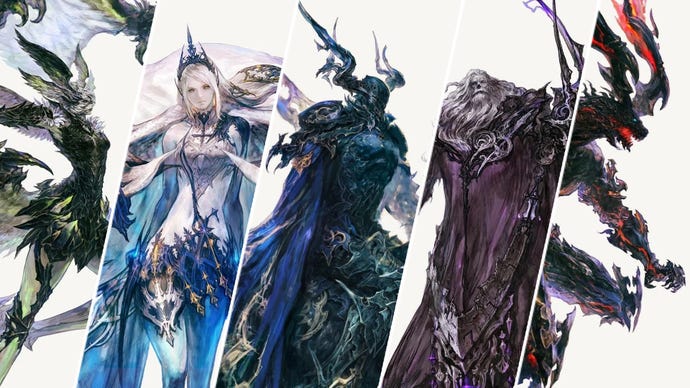

.png?width=291&height=164&fit=crop&quality=80&format=jpg&auto=webp)
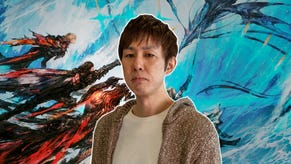

.png?width=291&height=164&fit=crop&quality=80&format=jpg&auto=webp)


